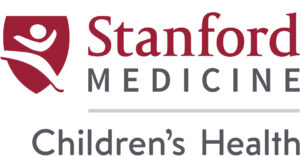One year ago, Jessica and Jesse Vega watched a team from Packard Children’s work to save their son Dominic’s life in the back of an ambulance. Just days earlier, the Vega family had been at home celebrating New Year’s Eve when 1-year-old Dominic showed signs of respiratory distress. As he struggled to breathe, they hurried to a nearby hospital, where he was diagnosed with a severe case of respiratory syncytical virus. When his lungs began to fail, Dominic was rushed in an ambulance to Packard’s Pediatric Intensive Care Unit. “They looked into our eyes and calmly explained the plan to get him to the hospital, and asked if Dominic had a blanket or stuffed animal he would like to have with him,” Jessica remembers. “From the beginning it was all about trust.”
High-Tech, High-Touch Care
After several unsuccessful attempts to clear Dominic’s collapsing lungs, doctors at Packard Children’s placed him on extracorporeal membrane oxygenation, or ECMO, a machine that pumps blood for the heart and lungs, giving them a chance to rest and heal. However, ECMO required that Dominic be placed into an induced coma and posed the risk of blood clots, bleeding, infection, and dangerous air bubbles. All told, Dominic was on ECMO for 41 days. Doctors estimate the odds of a patient surviving that long are less than 10 percent. His doctors, nurses, child life specialists, social workers, respiratory therapists, chaplains, and many others supported the Vega family through their scariest and darkest moments. “I asked one nurse if she had children, and she said that these were all her children,” Jessica recalls. “Another nurse would massage his arms every day and talk to him. They decorated his bed with a string of letters spelling ‘Domino,’ his nickname.”
Innovating for Results
One of the many doctors treating Dominic was David Cornfield, MD, director of critical care medicine at Packard Children’s and the Anne T. and Robert M. Bass Professor in Pediatric Pulmonary Medicine at the Stanford School of Medicine. To address the bleeding in Dominic’s lungs, Cornfield’s team came up with a creative solution. Dominic became the first patient on ECMO to receive an aerosol version of a coagulating compound typically administered intravenously. This innovative approach minimized the side effects and increased his chances of eventually breathing on his own. Jessica and her husband, Jesse, were by Dominic’s side as surgeons finally began the delicate process of removing tubes from Dominic’s neck and aorta to take him off ECMO. “We were waiting for his vital signs to start dropping and it didn’t happen,’’ recalls Jesse. “It was a complete shock. He was able to maintain his breathing.” Today, even the most seasoned doctors are still talking about Dominic, calling him one of their “biggest saves ever.”
Building a Future
In the two months that followed, Dominic was weaned off respiratory support and medications. He returned home just in time for his 2nd birthday, but had to re-learn how to stand, move his hands, and walk. His best source of physical therapy? Keeping up with his 4-year-old brother, Joey. “Dominic and Joey eat every meal together at their little red table,” Jessica says. “They love Legos and Play-doh, which have really helped Dominic’s coordination and muscle strength.” Though he will always have some scarring in his lungs, Dominic is now healing nicely. Cornfield estimates that more than 150 caregivers and staff played a direct role in helping save Dominic’s life. “The fact that we could bring so much expertise, focus, and dedication to one incredibly ill child for such a sustained period of time is a wonderful testament to the work that goes on here on a daily basis.”


